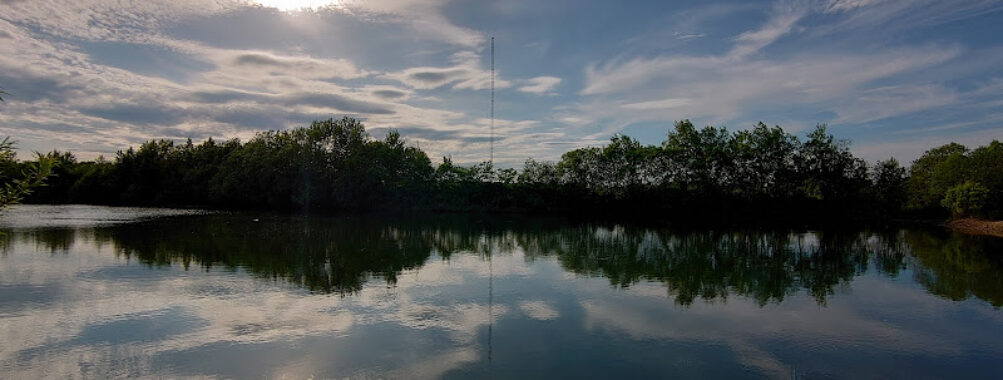
Birobidzhansky District
Table of Contents
Description
The Birobidzhansky District sprawls across the southern reaches of Russia’s Jewish Autonomous Oblast, offering travelers a fascinating glimpse into one of the world’s most unique cultural crossroads. Picture this: traditional Russian architecture standing alongside synagogues, with street signs in both Russian and Yiddish. Yeah, it’s pretty special. The district’s main city, Birobidzhan, serves as the beating heart of Jewish culture in the Russian Far East – though these days, the Jewish population is smaller than it once was.
The surrounding countryside is a nature lover’s playground, with the mighty Bira River cutting through dense forests and rolling hills. I’ve got to say, the contrast between the urban and natural landscapes here is striking. The district’s untamed wilderness areas are home to diverse wildlife, including Siberian roe deer and wild boar, making it a paradise for wildlife photographers and nature enthusiasts.
Key Features
• The Jewish Cultural Center and Museum – showcasing the region’s unique heritage
• Bira River Valley – perfect for kayaking and fishing adventures
• Traditional Russian-Jewish architecture throughout Birobidzhan city
• Pristine taiga forests offering excellent hiking opportunities
• Local markets featuring both Russian and Jewish culinary traditions
• Sholem Aleichem Street – the main thoroughfare with distinctive bilingual signage
• Historical monuments reflecting the area’s Soviet-era Jewish settlement
• Seasonal festivals celebrating the district’s multicultural heritage
• Traditional wooden houses with intricate carved decorations
• Rich biodiversity in the surrounding wilderness areas
Best Time to Visit
Summer months (June to August) are absolutely ideal for exploring Birobidzhansky District. The weather’s warm but not overwhelming, typically hovering between 20-25°C (68-77°F), and the days are long enough to pack in plenty of activities. Plus, this is when the local festivals usually happen – you might catch the Day of the City celebrations if you time it right!
Spring (April-May) and autumn (September-October) can be pretty magical too. The spring brings gorgeous wildflowers to the countryside, while autumn paints the forests in stunning gold and red hues. Just pack some warm layers – temperatures can be unpredictable during these shoulder seasons.
Winter? Well, it’s definitely an experience! From November to March, temperatures plummet well below freezing, often hitting -20°C (-4°F) or lower. But if you’re up for braving the cold, you’ll find the snow-covered landscapes absolutely breathtaking, and the city takes on a whole different character.
How to Get There
Getting to Birobidzhansky District isn’t exactly a walk in the park, but that’s part of what makes it special. The main gateway is through Birobidzhan city, which is conveniently located along the Trans-Siberian Railway. Regular trains connect the district with major cities like Khabarovsk (about 3 hours away) and Vladivostok (overnight journey).
By air, the nearest major airport is in Khabarovsk. From there, you can catch a train or take a bus to Birobidzhan. The bus journey takes about 2-3 hours, depending on traffic and weather conditions. Within the district itself, local buses and taxis are available for getting around, though having your own vehicle gives you more flexibility to explore the rural areas.
Tips for Visiting
First off, learning a few basic Russian phrases will go a long way – English isn’t widely spoken here, and while you might find some Yiddish speakers, Russian is your best bet for communication. Trust me, even just saying spasibo (thank you) will earn you some warm smiles.
Bring cash! While larger establishments in Birobidzhan city might accept cards, many smaller shops and restaurants are cash-only. ATMs are available in the city but can be scarce in rural areas.
Weather can change quickly, especially during spring and autumn. I learned this the hard way – pack layers and waterproof gear, even if the forecast looks good. And if you’re visiting in winter, serious cold-weather clothing is absolutely essential.
Photography enthusiasts should remember that some religious sites may have restrictions on taking pictures. Always ask permission first. Oh, and early mornings are perfect for capturing the unique architecture without crowds.
Consider timing your visit around local festivals – they’re incredible opportunities to experience the district’s unique culture. The Festival of Jewish Culture, usually held in summer, is particularly worth catching.
For nature lovers, guided tours into the surrounding wilderness are highly recommended. The local guides know all the best spots for wildlife watching and can share fascinating stories about the region’s natural history. Just remember to bring insect repellent during summer months – the mosquitoes can be pretty enthusiastic!
Lastly, don’t rush your visit. The real charm of Birobidzhansky District reveals itself slowly. Take time to chat with locals, explore the back streets, and soak in the unique atmosphere of this fascinating corner of Russia. And yes, try the local cuisine – it’s an interesting fusion of Russian and Jewish flavors that you won’t find anywhere else in the world.
Location
Places to Stay Near Birobidzhansky District
Find and Book a Tour
Explore More Travel Guides
No reviews found! Be the first to review!